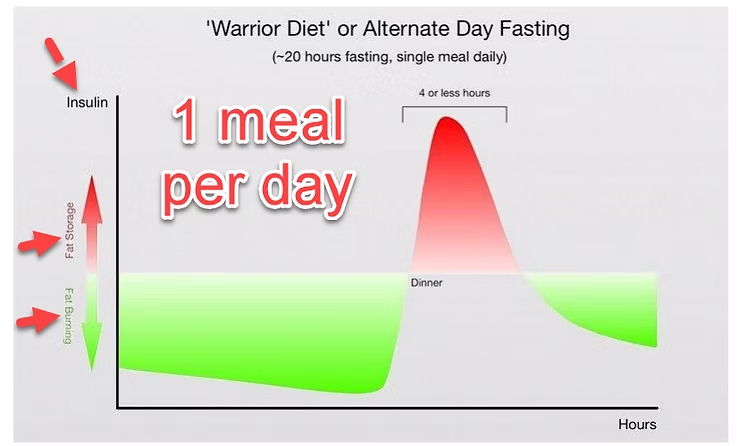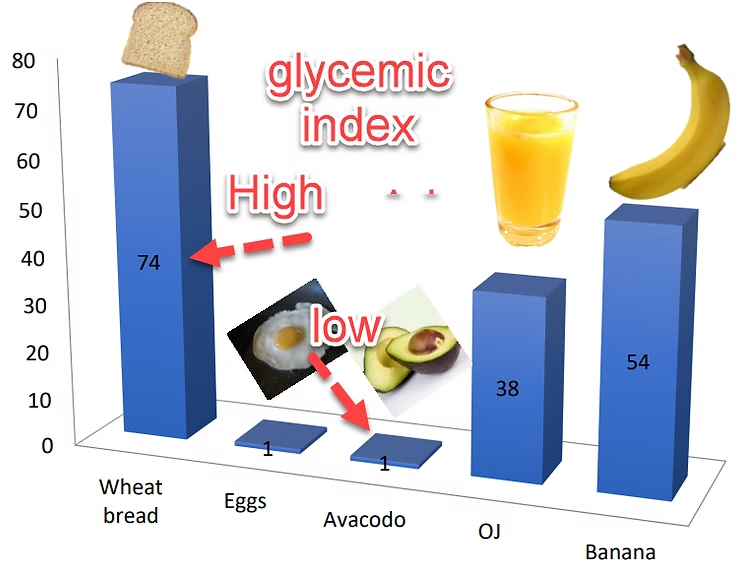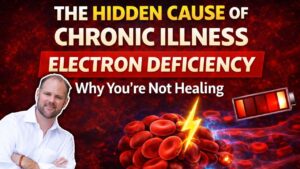Understanding the Benefits of Intermittent Fasting and Ketosis
To understand the benefits of intermittent fasting and being in a state of ketosis, it is important to understand what those look like, and how to go about both. Fasting and intermittent fasting can help anyone trying to improve their overall health.
Insulin, Glucose, and Inflammation
Chronic inflammation can have a lot of effects on your body. So when you eat something like a bagel, your glucose goes up. Insulin attaches to the cell wall, allowing glucose to enter the cell and start producing energy.
Because insulin is so pro-inflammatory, we actually don’t really want to use glucose as a fuel source. It is better to be in a ketogenic state, where our bodies use fats as the source for fuel. Think of using fats for fuel like driving a Tesla: they are very efficient and fairly clean. Using glucose, on the other hand, is similar to driving a diesel engine. This is why ketogenic and paleo diets, as well as fasting, are critical for your recovery.
The Importance of Diet
The first step is to examine the patient’s diet and try to get them into eating habits that are as anti-inflammatory as possible. All foods can be reduced to a mixture of carbohydrates, proteins, and fats. When you eat carbohydrates, you have a major spike in insulin, which again promotes inflammation.
Proteins, on the other hand, result in a significantly lower insulin spike. There is still a noticeable increase in insulin, but not nearly as much.
When you eat fats, there is hardly any insulin increase. This means a ketogenic, paleo, or otherwise high-fat diet is going to go a long way toward reducing inflammation.
So how does fasting play into this?
There are several benefits of fasting, especially related to autophagy, or your body’s way of clearing out dead or damaged cells. As you might imagine, this is very, very important.
All systems of your body create debris. Autophagy is your body’s way of removing that debris. When you are fasting, your body begins to look to these dead or damaged cells as a source of energy, since they are the proverbial “weakest link.” Anything weak or not of any use is processed and utilized for energy production.
So by cleaning the system, by purging it of bad material, we can provide a better, much more clean environment for our bodies to function. This also raises ketones, which are used for energy, and are a much cleaner food source. It benefits the brain and the gut, and it turns off bad genes in the process.
A lot of energy is used just to digest food. So if you are eating five, six, seven, or more times a day, there is a lot of energy that goes just to digest the food. When we are fasting, we don’t digest, so our body can devote that energy more towards healing. We want to divert those calories towards processes like hormone optimization, resetting microbes, gut influences, and more.
How to Implement Intermittent Fasting
At the end of the day, we need to fix your insulin. Intermittent fasting is a great way to help with that. One of the most common ways is to do what we call a 16/8 pattern. You don’t eat for 16 hours, then get all of your eating done in 8 hours. You might start eating at noon, and stop eating at 8 p.m., or start at 2 p.m. and stop at 10 p.m.
The idea is to give yourself a break. There are multiple ways you can do that, but the 16/8 method is what I subscribe to, and that’s even only eating twice a day. No snacking.
Looking at my own data, you can see why. When I eat, I have the same general insulin and glucose spikes, but throughout the rest of the day, I have a fairly low insulin level. My glucose goes up and down very quickly, but insulin increases and decreases very slowly. This gives me a rather large window of time where my insulin levels dip down and remain low throughout the majority of my day.
Now, if you try this method and start off well but then fail and can’t keep consistent at first, that is okay. Sometimes I lose it, too. But the idea is that you continue to keep going and try to keep it as consistent as possible. One or two bad days shouldn’t mean you give up completely.
Maybe it is too hard for you to start doing this right away. Often, I will recommend patients gradually work into it. First, reduce snacks, eating only breakfast, lunch, and dinner. Next, only eat two times a day.
For some people, I recommend doing a 24-hour fast. If you are diabetic, pre-diabetic, or have other insulin-related problems, there may be a lot of reasons you cannot do 24-hour fasts, but they can be very beneficial for the majority of people.
And this makes sense, historically, too. We live in a day and age where food is readily available all throughout the day. This is only a recent development. Hundreds of years ago, people did not always have the choice to fast. Sometimes they were starving, sometimes there just wasn’t food to go around.
It is important for us today to go through 24-hour fasts. Sometimes I’ll even put people on 36 or 48-hour fasts. Again, start simple with just three meals a day (no snacking), then gradually work to two meals. After a bit of that, try 24-hour fasting and see how it goes. Once you get acclimated to this, it cleans up your diet and you just begin to feel much, much better.
Conclusion: Embracing Intermittent Fasting and Ketosis for Optimal Health
By understanding the benefits of intermittent fasting and ketosis, you can unlock a multitude of advantages for your health and well-being. From combating chronic inflammation to optimizing cellular clearance and energy utilization, these practices offer transformative effects. Remember, gradually implementing intermittent fasting and adopting a diet that prioritizes healthy fats can revolutionize your health, paving the way for a better quality of life.
Video time stamps
[00:00:00] intermittent fasting and ketogenic [paleo ketogenic lifestyle
[00:00:40] High insulin and high glucose levels are what we call pro-inflammatory
[00:01:31] ketogenic or use fats
[00:02:10] brain problems, breathing problems, gut problems, cancer joint problems, [00:02:15] I problems, cardiovascular gum problems, diabetes, obesity
[00:02:45] proteins and fats
[00:03:25] going to decrease your inflammation
[00:03:50] mitochondria damage
[00:04:25] Raises ketones
[00:05:00] Hormone optimization,
[00:05:10] boost metabolism increase your lifespans decreases oxidative stress
[00:05:20] Intermittent fasting, 24-hour fasting
[00:07:05] gaining weight. Heart disease, cancer. Chronic inflammation
[00:07:35] 16 hours fast
[00:09:50] It decreases your mitochondria
[00:10:25] insulin problems, if you’re diabetic
[00:11:05] 24 hour fasting
Frequently Asked Questions (FAQ)
ntermittent fasting supports autophagy, lowers inflammation, optimizes hormones, and improves energy efficiency by allowing the body to use stored fat for fuel instead of relying on constant glucose intake.
In ketosis, the body burns fat for energy instead of glucose, producing ketones, which are a cleaner and more efficient fuel source. This reduces inflammation, supports brain and gut health, and improves metabolic function.
The 16/8 method involves fasting for 16 hours and eating within an 8-hour window, often by skipping breakfast and eating between noon and 8 p.m. It helps lower insulin levels and promotes fat-burning.
Beginners should start gradually by cutting out snacks and eating only three meals a day, then move to two meals. Over time, they can progress to 16/8 fasting or occasional 24-hour fasts, depending on their health condition.












